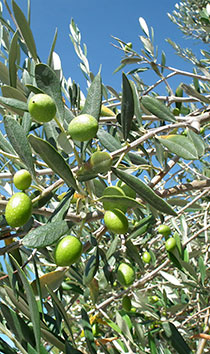14déc 2016
California Olive Oil Production Reaches 13,300 Tons
An estimate by the California Olive Oil Council reveals strong growth in the state's production and market share.
By OLIVE OIL TIMES STAFF on December 12, 2016
Filed in North America
If California were a country, it would rank between Albania and Lebanon in terms of annual olive oil production, which is estimated to be 13,300 tons this year, according to figures released today by the California Olive Oil Council (COOC).
While olive oil production is also found in other states including Texas, Florida, Georgia and Arizona, the bulk of American olive oil is from California, and today’s figure is in line with a November 2015 forecast by the International Olive Council that projected 14 million tons of U.S. output for the 2015/16 season.
The state’s suppliers now account for 5.8 percent of the olive oil consumed in the U.S., the COOC said in a statement; a dramatic increase from its 2-percent market share just a few years ago.
now account for 5.8 percent of the olive oil consumed in the U.S., the COOC said in a statement; a dramatic increase from its 2-percent market share just a few years ago.
At the same time, olive oil giants including Spain, Italy and Greece are experiencingdrops in production this season due to a confluence of climatic factors, fruit fly infestations and cyclical downturns. Italy, in particular, is expected to see half the output of last year.
While the figures reveal a growing industry poised to capture an ever-growing piece of the world’s second-largest olive oil market, it hasn’t been easy for producers in the state. A pathogen akin to “bulls eye rot” began spreading among olive cultivars commonly used for oil production over the summer and aggressive competition has driven fruit prices higher.
But amid the growing American appetite for high-quality olive oil the outlook for California producers is bright, said the COOC, which was recently awarded a third grant of $357,000 from the California Department of Food and Agriculture (CDFA).
The COOC’s executive director, Patricia Darragh, said, “The award will strengthen California agriculture overall by building partnerships that will advance the immense importance of both the olive oil segment and the overall agricultural community.”
Retour


